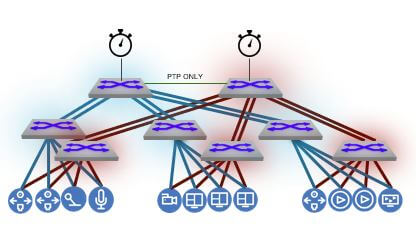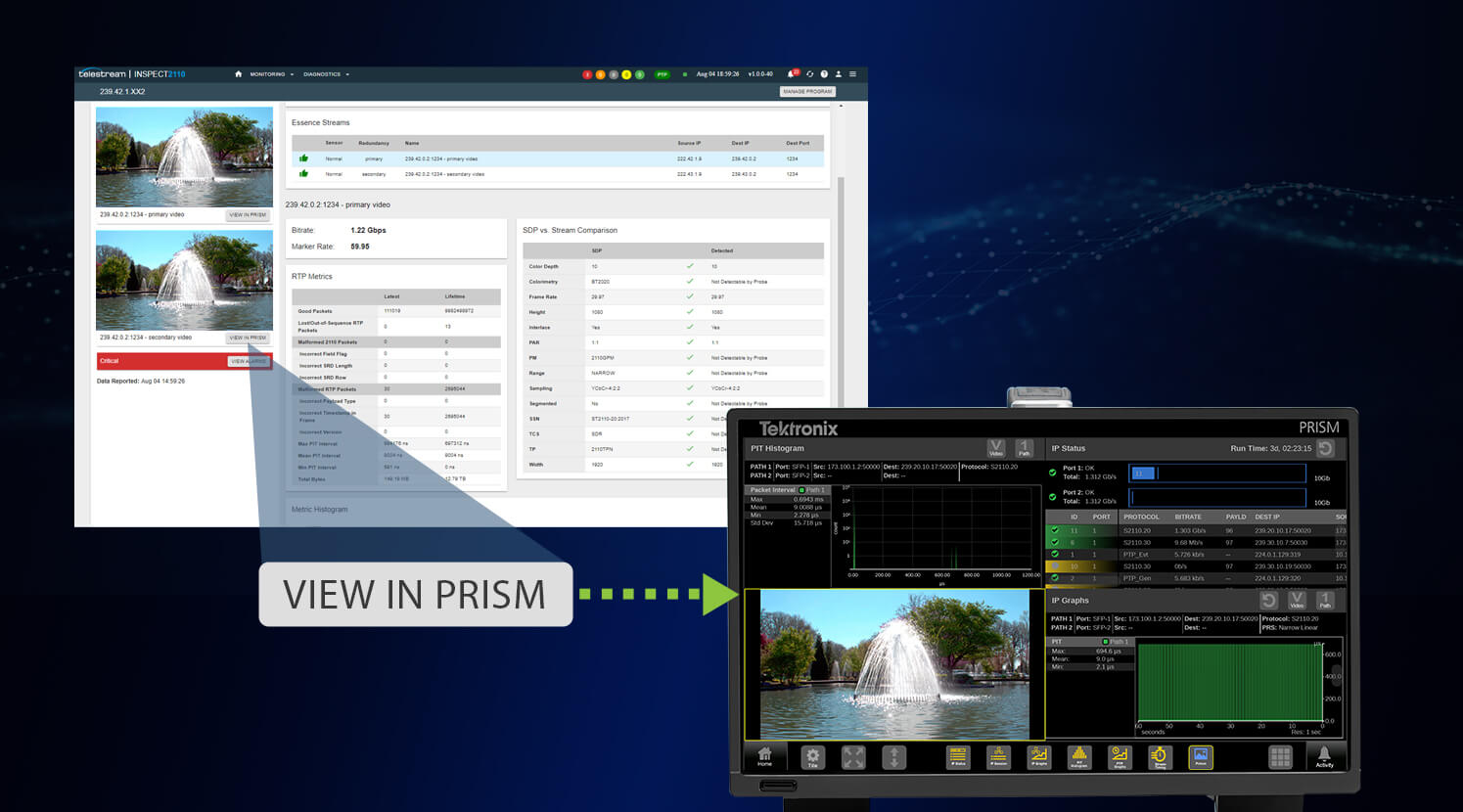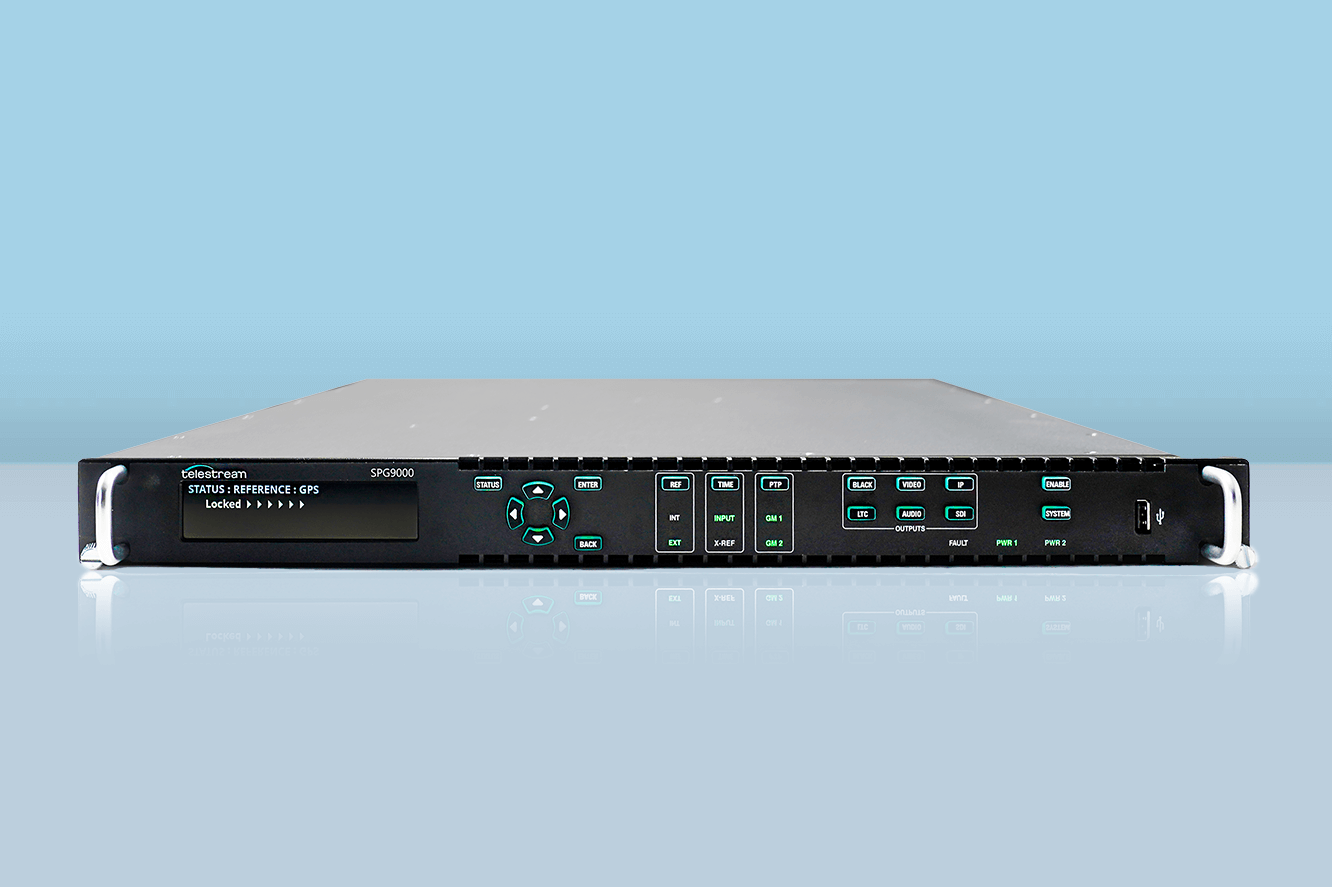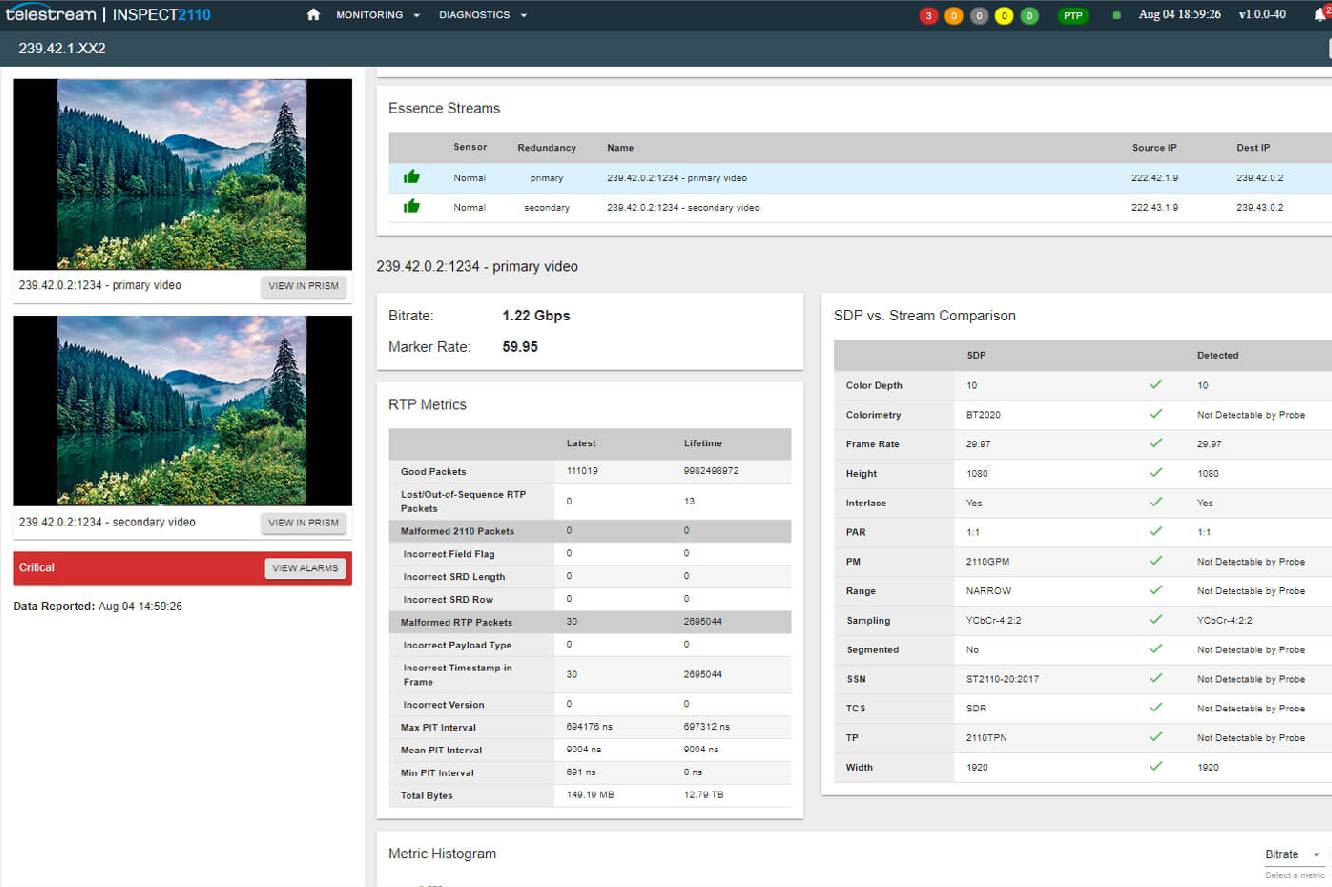PTP is Key to ST 2110 Video Success
Establishing a reliable Precision Time Protocol (PTP) timing reference is one of the most challenging parts of ST 2110 video network deployment. Whether implementing a new ST 2110 facility, or an expansion project, PTP synchronization may be new for both the design team as well as ongoing operations.
Important PTP deployment considerations include the source selection, compatibility and synchronization across the network, PTP source redundancy planning, and potentially a mix of IP and SDI gateways that may require an analog reference. PTP network timing must meet ST 2059 and IEEE 1588 to ensure multi-vendor compatibility.
Select PTP Timing Source
There are several methods to provide a timing reference for a PTP network: GNSS Satellite (GPS or GLONASS), External Analog Black or Tri-Level Sync reference, External Continuous Wave (CW) reference (e.g. cesium or rubidium clock), an external PTP Master or an internally generated clock. Because PTP also requires a time-of-day reference, an additional reference input may be needed, such as Time Code (VITC or LTC) or NTP.

Synchronizing non-PTP Devices
As video networks and equipment migrate from SDI to IP, it’s important for timing designs that support hybrid environments. The Telestream SPG can function simultaneously as a PTP timing source and as a traditional video sync source with black/tri-level sync outputs and time code outputs to synchronize non-PTP capable devices. It can also lock to another PTP source and generate video and time code sync for a local facility to synchronize across the network.
PTP Redundancy
A PTP system can be implemented with two or more grand masters, using the Best Master Clock Algorithm (BMCA) that ensures another source can assume the active role if the current source fails. In addition, the Telestream SPG also serves as a video sync source, it can be paired in a primary/backup configuration with a Telestream ECO changeover unit, providing an uninterrupted reference source.

Network Design Resiliency
In a PTP-centric network topology, a best practices design can include two (or more) grand masters feeding into spine switches in a leaf/spine architecture. Local “islands” as leaf nodes may have additional timing nodes with failover, such as SPG timing nodes with ECO switchover, providing resiliency in local islands similar to the grand master.
Monitor & Troubleshoot PTP
SPG sync generators provide status information for both the PTP and the GNSS receiver through browser interface or API, so a network management system can alert operators when issues occur. Telestream’s Inspect 2110 monitoring solution can monitor PTP sources in the network, and PRISM has PTP measurements to help the engineer interactively troubleshoot any problems.

PTP Reference Clock Solutions
- Reliable & stable sync source
- PTP grandmaster & slave
- Test pattern generation
PRISM SDI/IP Waveform Monitor
- Enhanced IP Monitor for ST 2110-20/30/40
- Analyze PTP & Redundant Paths
- SD, HD, 3G, 4K up to 25GE
- Advanced HDR, Compliance & QC testing
Inspect 2110 – ST 2110 Network Monitor
- Scalable ST 2110 video network monitoring
- Confirms streams, redundancy and PTP operation
- Mosaic views and program status metrics
- Direct link to PRISM for analysis




